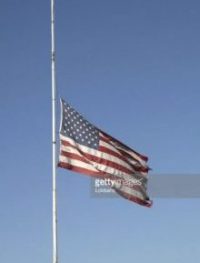|
|
|||||||
|
|||||||
|
|||||||
|
|||||||
|
|||||||
|
|||||||
|
|||||||
|
|||||||
|
|||||||
|
|||||||
|
|||||||
|
|
|||||||
|
|
|||||||
|
|||||||
|
|||||||
|
|||||||
|
|||||||
|
|||||||
|
|||||||
|
|||||||
|
|||||||
|
|||||||
|
|||||||
|
|
|||||||
|
|
|||||||
|
|||||||
|
|||||||
|
|||||||
|
|||||||
|
|||||||
|
|||||||
|
|||||||
|
|||||||
|
|||||||
|
|||||||
|
|
|||||||
|
|
|||||||
|
|
HOT JOBS IN EVANSVILLE
USI Baseball signs six for 2019
University of Southern Indiana Baseball announced the signing of six players – four incoming freshmen and two junior college transfers – in the early signing period. Of the six student-athletes signed by USI and Head Coach Tracy Archuleta, five are from Indiana and one from Colorado.
Selecting USI to continue their education and begin their collegiate baseball careers are infielder Bryson McNay (Sellersburg, Indiana), catcher Lucas McNew (Floyds Knobs, Indiana), left-handed pitcher Paul Perez (Trinidad, Colorado), right-handed pitcher Kendal Riley (Terre Haute, Indiana), infielder Kobe Stephens (Dale, Indiana), and infielder Adam Wildeman (Evansville, Indiana).
“This fall, Assistant Coach Jeremy Kuester really focused on bringing some of the best talent from central and southern Indiana area,” said Archuleta. “With nine seniors on this year’s squad, the six signees will have the ability to make an immediate impact on the 2019 team.
Biographies of USI Baseball’s fall signees:
McNay: The infielder is entering his senior season at Silver Creek High School (Sellersburg, Indiana) after being named the Baseball Player of the Year by News-Tribune Sports Performance Yearly (NTSPY) when he batted .510 with 14 doubles, three triples, nine home runs, 40 RBIs, and 50 runs scored in 33 games as a junior. McNay, who also was a Louisville Courier-Journal Baseball Player of the Year finalist in 2017, also set the SCHS season records for hits, RBIs, and runs scored as a junior and established a new career-home run mark last spring.
McNew:Â The catcher begins his senior year at William W. Borden High School (Borden, Indiana) after earning honorable mention All-State and first-team All-Area as a junior when he batted .462 with seven doubles, two triples, seven home runs, and 23 RBIs. McNew also was a finalist for the NTSPY Baseball Player of the Year award.
Perez:Â The left-handed pitcher is currently a sophomore at Trinidad State Junior College after spending 2017 at Western Oklahoma State Junior College. Perez lettered in baseball at Calusa Preparatory School (Miami, Florida).
Riley:Â The right-handed pitcher starts his senior season at Terre Haute North Vigo High School where he has lettered in baseball and basketball. Riley, who spent most of 2017 recovering from elbow surgery, helped Terre Haute North to the Indiana state finals in 2015 and to the Conference Indiana championship in 2016.
Stephens:Â The shortstop enters his sophomore season at Wabash Valley College after batting .397 with 37 runs scored, 28 RBIs, 21 stolen bases, six doubles, one triple, and one home run in helping lead the Warriors to a third-place finish in the 2017 NJCAA World Series as a freshman. Stephens lettered in baseball and basketball at South Spencer High School (Rockport, Indiana), helping lead the Rebels to Indiana state titles in 2013 and 2015.
Wildeman:Â The infielder begins his senior season at Mater Dei High School (Evansville, Indiana) after earning second-team All-SIAC honors in baseball, hitting .390 with an on-base percentage of .490 in 2017. Wildeman, who also has lettered in football at MDHS, drove in 13 RBIs and scored 13 runs in 2017.
St. Vincent Evansville Birth Announcements for week of December 5, 2017
Ashlee Gilbert and Jared Wagner, Evansville, daughter, Sophia Elizabeth, Nov. 22
Catherine and Zachary Zalucki, Evansville, son, Ryan JC Wayne, Nov. 27
Mallory and Joseph Kiesler, Evansville, son, Edward Joseph, Nov. 27
Rahni Taylor and Jermaine Johnson, Evansville, son, Jerijah Asad Hershel Luke, Nov. 27
Chelsea Stuteville and Adam Whipkey, Evansville, son, Liam James, Nov. 27
Holly Gentry and David Moseley, Tell City, IN, son, Westyn Owen Othmar, Nov. 27
Alyssa and Brandon Slaton, Evansville, daughter, Hazel Jolene, Nov. 28
Heather and Corey Hendon, Evansville, daughter, Ansley Reese, Nov. 28
Kimberly or Garren Hill, Princeton, IN, daughter, Mia Rose, Nov. 28
Ashley Hopf and DJ Hall, Poseyville, IN, son, Hayden Mitchell, Nov. 28
Hailee and Damiem Grice, Evansville, son, Konnor McCoy, Nov. 29
Brittany and Christopher Butler, Henderson, KY, son, Caspian Grey, Nov. 29
Meagan and Tanner Telligman, Bruceville, IN, daughter, Lillian Abigail Mae, Nov. 29
Mi’Randa Singh, Evansville, daughter, Ka’Lieyha Mo’Niek, Nov. 29
Bailey and Joseph Stewart, Mount Vernon, IN, son, Maddux Wayne, Nov. 30
Allison and Jared Stunkel, Owensville, IN, son, Jensen James, Nov. 30
Whitney and Travis Taylor, Henderson, KY, son, Carson Daniel, Nov. 30
Mia Mimms and Christian Voorhess Russ, Evansville, daughter, Aria Jane, Nov. 30
Kaylee Ricketts, Evansville, daughter, Makayla Ann Marie, Dec. 1
Kara and Tucker Evans, Rockport, IN, son, Jasper Avery, Dec. 1
Sarah Benton and Christopher Cunningham, Evansville, daughter, Beckett Rose, Dec. 1
Tara and James Holder, Evansville, son, Wyatt James, Dec. 2
Desiree and Danny Scales, Evansville, son, Rogan Ryne, Dec. 2
Jessica Trinh and Codi Meyer, Evansville, son, Jamison Joe Van, Dec. 2
Divided Supreme Court throws out juvenile’s LWOP sentence
Olivia Covington for www.theindianalawyer.com
In a 3-2 decision Tuesday, the Indiana Supreme Court reduced a life without parole sentence for an offender convicted of murder at 17, finding LWOP sentences should be reserved for the most “heinous†juvenile offenders. The dissenting justices, however, found the nature of the crime in question warranted a life sentence.
While hanging out with friends in November 2015, 17-year-old Carltez Taylor, who had recently been released from a juvenile boot camp, loaded a magazine into a gun his friend had brought with him and stuck the gun in his waistband. Later in the evening, one of Taylor’s friends, D.G., began texting her boyfriend, J.W., which angered Taylor.
Taylor and the other teenage boys present then began discussing a plan to fight J.W. They told D.G. to convince J.W. to come over. J.W. agreed to meet D.G. on a nearby street corner, where she made him wait under the guise of waiting for her sister to arrive. But while J.W. and his nephew, T.S., were standing on the corner, Taylor emerged and opened fire with his friend’s gun, striking J.W. in the back and killing him.
Both D.G. and T.S. recognized Taylor as the shooter. After he fled the scene, the 17-year-old returned to D.G.’s house and threatened to kill her if she told anyone what she had witnessed. Taylor and the other boys then hid the gun, magazine and hoodie Taylor had been wearing, but when T.S.’s family told police that Taylor was the shooter, D.G. led detectives to the hidden evidence.
Taylor eventually turned himself in and was charged with murder, attempted murder and conspiracy to commit murder. Two days before trial, the state amended the conspiracy count to reflect that another teen had supplied the gun, and Taylor objected on timeliness grounds. The court overruled the objection, but did agree to bar a state’s witness from referring to Taylor by his nickname, “Looney the Shooter.â€
However, the state and a witness did refer to Taylor by his nickname, though his counsel did not object.
A jury eventually found Taylor guilty of the murder and conspiracy charges and recommended a sentence of life without parole. The Vanderburgh Circuit Court agreed, making Taylor only the fifth juvenile in Indiana history to receive an LWOP sentence.
Taylor challenged his convictions and sentence on the basis of his age during oral arguments before the Indiana Supreme Court in June, and the divided court ultimately revised his sentence to an aggregate 80 years in a Tuesday opinion.
Chief Justice Loretta Rush, writing for the majority, first said that while the use of the name “Looney the Shooter†was improper, it did not amount to fundamental error considering the other “strong†evidence against Taylor. Rush further concluded the state’s charging amendment made two days before trial was formal, rather than substantive, because it did not prejudice Taylor’s substantial rights. The amendment also did not prejudice his defense that challenged the identity of the shooter, so it was not untimely, she said.
The chief justice wrote there was “ample circumstantial evidence†to imply a conspiracy to murder J.W., including Taylor’s discussions with the other teenage boys about fighting J.W., D.G.’s agreement to convince J.W. to come over and wait for her “sister,†and the teens’ efforts to hide the evidence after the shooting. The court also left Taylor’s 35-year concurrent sentence on the conspiracy charge intact.
However, the majority of justices ultimately chose to lessen Taylor’s murder sentence to 80 years, considering the immaturity that accompanied Taylor’s age and the inability he would have to improve his character if he never had the opportunity to get out of prison. Additionally, compared to the “drawn out†nature of the murder in Conley v. State, 972 N.E.2d 864, 880 (Ind. 2012) — the only juvenile LWOP case the court has upheld — J.W.’s death was “nearly instantaneous.â€
“Our collective judgment is that Taylor’s character and the nature of his offense — grievous as it was — do not warrant making him Indiana’s fifth juvenile sentenced to a guaranteed death in prison,†Rush wrote.
The court’s decision was unanimous except on the central issue of whether the LWOP sentence should be upheld. Justice Geoffrey Slaughter, writing in a dissenting and concurring opinion joined by Justice Mark Massa, said Taylor’s actions reflected a disregard for human life, and his past criminal history did not support his argument for a more lenient sentence on the grounds of his character.
“…I disagree that Conley set a floor below which any juvenile whose offense is thought to be any less monstrous will obtain 7(B) relief,†Slaughter wrote. “That is the trend and, I fear, the implication of today’s decision. As the Court recognizes, the point of rule 7(B) is to ‘leaven outliers,’ to not achieve some perceived correct sentence, whatever that means.â€
Governor Eric Holcomb Directs Flags To Be Flown at Half-Staff
INDIANAPOLIS – Governor Eric J. Holcomb is directing flags across the state to be flown at half-staff for Pearl Harbor Day.
Flags should be flown at half-staff from sunrise to sunset on Thursday, December 7, 2017.
Gov. Holcomb also asks businesses and residents to lower their flags to half-staff on Thursday.
Indiana Prosecutors Press Conference: The Truth About Marijuana
 The Truth About Marijuana, during a press conference, Wednesday, December 6 at 1:30 p.m. at the Indianapolis Sheraton at Keystone Crossing, 8787 Keystone Crossing, Plaza Ballroom D & E.
Sponsored by the Association of Indiana Prosecuting Attorneys, Inc., the press conference will feature Association representatives, Luke Niforatos of Smart Approaches to Marijuana (SAM), Mike Ripley of the Indiana Chamber of Commerce and Boone County Sheriff Mike Nielsen, all describing positions against legalization of marijuana in any form, for any purpose.
Following the press conference will be an educational summit continuing until about 4 p.m. The summit will feature presentations by Indiana Attorney General Curtis T. Hill, Jr. (via video), SAM’s Niforatos, Indianapolis Internist Dr. Palmer MacKie, the Indiana Chamber’s Ripley, Sheriff Nielsen and Ripley County Prosecuting Attorney Richard Hertel, president of the Association of Indiana Prosecuting Attorneys. The media is invited to attend this event as well.
AG Curtis Hill seeks U.S. Supreme Court ruling against California’s restrictive farming regulations
           Actions aimed at protecting Indiana farmers from aggressive over-regulation
Attorney General Curtis Hill announced today his office has joined a 12-state effort to challenge in the U.S. Supreme Court attempts by California to impose agricultural regulations on Indiana and other states.
The lawsuit opposes a California law requiring egg producers in all other states to comply with California’s farming regulations regarding housing of poultry in order to sell eggs in that state. The suit claims that California’s regulations violate both a federal law prohibiting states from imposing their own standards on eggs produced in other states and the Commerce Clause of the U.S. Constitution, which gives Congress exclusive authority to regulate commerce among and between states.
In 2016, a three-judge panel of the Ninth Circuit Court of Appeals ruled that an earlier group of plaintiff states lacked standing to pursue their claims in this regard. Today’s filing in the U.S. Supreme Court, however, answers this assertion by providing a careful economic analysis that establishes the impact of these burdensome regulations.
“This case involves a concept known as horizontal federalism,†Attorney General Hill said. “Under the Constitution, states must respect one another’s sovereign prerogatives.â€
Especially worth noting, he added, is that the California law has nothing to do with the quality of the products sold to consumers.
“Obviously, every state has the right to regulate products based on such factors as consumer health and safety,†Attorney General Hill said. “It’s another thing altogether for one state to sit in judgment of other states’ manufacturing and production processes – and to erect barriers to products from other states based upon that judgment.â€
In the case against California, Indiana joins lead plaintiff Missouri along with Alabama, Arkansas, Iowa, Louisiana, Nebraska, Nevada, North Dakota, Oklahoma, Utah and Wisconsin.
States’ legal complaints against other states must be filed directly in the U.S. Supreme Court, as Congress has provided that “[t]he Supreme Court shall have original and exclusive jurisdiction of all controversies between two or more States.†28 U.S.C. § 1251(a).












